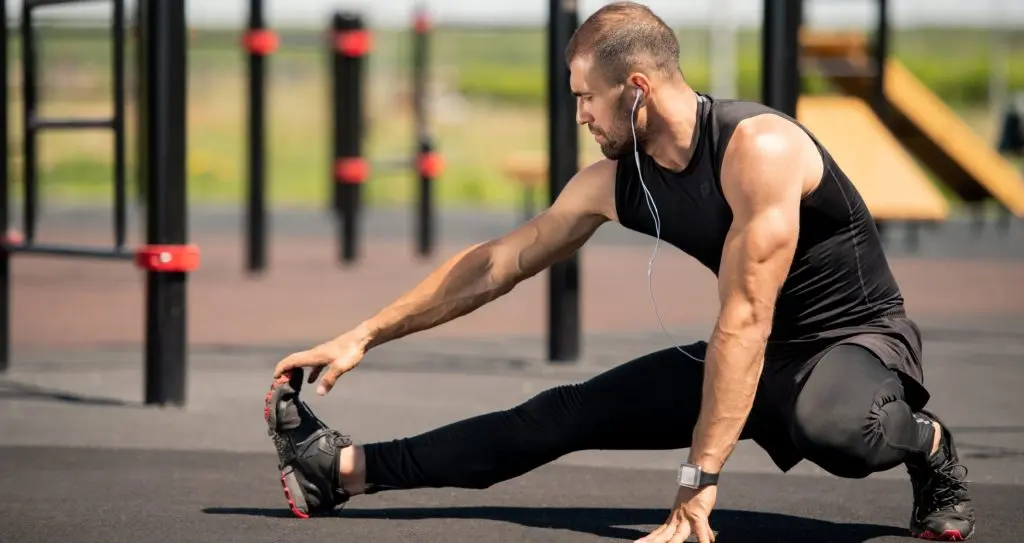

wordpress-seo domain was triggered too early. This is usually an indicator for some code in the plugin or theme running too early. Translations should be loaded at the init action or later. Please see Debugging in WordPress for more information. (This message was added in version 6.7.0.) in /home/sehatnagar.com/public_html/wp-includes/functions.php on line 6114
Stretching is a crucial component of any fitness routine or athletic activity. Static vs Dynamic Stretching helps to improve flexibility, increase joint range of motion, and reduce the risk of injuries. However, there are different types of stretching, with static and dynamic stretching being two common methods. In this article, we will explore the differences between static and dynamic stretching, and the benefits of each.

Static stretching involves holding a stretch in a fixed position for a certain period of time without any movement. This type of stretching is typically done after a warm-up or as part of a cool-down routine. Static stretching targets specific muscles or muscle groups and aims to gradually lengthen and relax the muscles.
During static stretching, the muscle is stretched to a point of mild discomfort and held for about 15-60 seconds. It is important to avoid bouncing or jerking movements, as these can lead to muscle strain or injury. Some examples of static stretches include touching your toes while sitting with your legs extended, or reaching behind your back to stretch your shoulder muscles.
Dynamic stretching involves moving a muscle or joint through its full range of motion in a controlled manner. It mimics the movements that will be performed during the actual activity or sport. Dynamic stretching is typically done as part of a warm-up routine to prepare the body for physical activity.
Unlike static stretching, dynamic stretching involves continuous movement without holding the stretch. It helps to improve muscle elasticity, increase blood flow to the muscles, and enhance neuromuscular coordination. Examples of dynamic stretches include leg swings, arm circles, or walking lunges.
Both static and dynamic stretching have their advantages and are suitable for different situations. Here are some key differences between the two:
Static stretching is typically done after a warm-up or as part of a cool-down routine, while dynamic stretching is done as part of a warm-up routine before physical activity.
Static stretches are held for a longer duration (15-60 seconds), while dynamic stretches involve continuous movement without holding the stretch.
Static stretching may temporarily decrease muscle strength and power, while dynamic stretching can improve muscle activation and performance.
Static stretching done before physical activity may not be as effective in preventing injuries, and in some cases, may even increase the risk of injury, especially if not done properly. Dynamic stretching, on the other hand, can help to activate muscles, warm up the body, and reduce the risk of injury during physical activity.
Static stretching can offer several benefits when done correctly, including:
Static stretching can gradually increase muscle length and improve flexibility, which can help to enhance joint range of motion and overall movement quality.
Static stretching can help to relax tense muscles and reduce muscle soreness after a workout or physical activity.
Static stretching can be useful in a rehabilitation program for certain conditions, such as muscle strains or injuries, under the guidance of a healthcare professional.
Dynamic stretching can provide several benefits that are specific to warm-up routines, including:
Dynamic stretching can help to increase blood flow to the muscles, which can improve muscle temperature and flexibility, and enhance performance.
Dynamic stretching can help to activate muscles and prepare them for the specific movements and demands of the upcoming activity or sport, which can improve performance.
Dynamic stretching involves coordinated movements that can improve neuromuscular coordination and proprioception, which are crucial for skilled movements and sports performance.
Both Static vs Dynamic Stretching have their place in a well-rounded
fitness routine or athletic activity. Static stretching is best suited for cool-down routines or as part of a rehabilitation program under the guidance of a healthcare professional. It can help improve flexibility, relax muscles, and aid in recovery after physical activity.
On the other hand, dynamic stretching is ideal for warm-up routines before engaging in physical activity. It can help increase blood flow, improve muscle activation and performance, and enhance neuromuscular coordination. Dynamic stretching prepares the body for the specific movements and demands of the upcoming activity or sport, reducing the risk of injuries.
It’s important to note that static stretching should not be done as the sole warm-up routine before engaging in high-intensity activities, as it may temporarily decrease muscle strength and power. It’s essential to incorporate dynamic stretching into your warm-up routine to effectively prepare your body for physical activity.
In summary, static stretching and dynamic stretching are two different methods of stretching with their own benefits and purposes. Static stretching is best suited for cool-down routines and rehabilitation programs, while dynamic stretching is ideal for warm-up routines before engaging in physical activity. Incorporating both types of stretching appropriately into your fitness routine can help you optimize your performance, reduce the risk of injuries, and improve overall flexibility and mobility. It’s always recommended to consult with a healthcare professional or a qualified fitness trainer to determine the best stretching routine for your specific needs and goals.